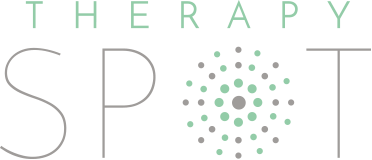There are many types of speech and language disorders that one can suffer from, all of which can vary in severity. While treatment is available for just about every speech and language disorder, some are more common than others. Read on to learn more about some of the most common speech and language disorders treated by speech therapists.
Stuttering/Stammering
Stuttering, also known as stammering, is so common that most people can detect and recognize it easily. It ranges from very mild to quite severe. For some, it’s triggered by feelings of stress, confusion, overwhelm, etc. For others, it’s constant regardless of circumstances. It’s also something that some children will eventually outgrow.
One thing that most people don’t know is that stuttering can also include non-verbal signs and tics. These include things like involuntary blinking or abdominal tensing. Speech language pathologists are trained to watch for these symptoms as well.
Stuttering can present as early as when a child is learning to talk, or it can come on later in their childhood. It rarely develops in adulthood, though many adults carry their stutter from childhood, especially if it’s left untreated.
Depending on the severity of the stutter, treatment may or may not be needed. It’s only a problem when it starts impeding daily activities and/or making life more difficult. If you avoid certain triggering activities, such as talking on the phone, simply to avoid stuttering, then it’s reached the point of a disorder.
Apraxia of Speech
Apraxia happens when the path between a person’s brain and speech is either obscured or lost. With Apraxia, you know perfectly well what you want to say, and could even write it down, but your brain can’t send the proper message to your speech muscles.
Apraxia also has varying levels of severity. It ranges from mild and functional to incoherent speech. Like stuttering, you should seek treatment if the condition is disrupting your life and making things more difficult.
Apraxia can be caused by brain damage – as a result of a stroke, for example. However, some children are born with it and the cause of this is still being studied. There is some evidence to suggest a genetic link, but it’s still a bit of a mystery.
This one can be a little tougher to diagnose, but symptoms include irregularities in tone, emphasis, and rhythm of words as well as mispronunciation.
Dysarthria
Dysarthria presents with slowed speech, slurred speech, and limited movement in the lip, tongue, and jaw. You may also experience abnormal pitch and rhythm when speaking, laboured speech, and difficulty articulating, among other things.
This disorder is different than others as it’s a result of muscle or nerve damage to the lips, tongue, diaphragm, and vocal cords. This can be a result of some incident or trauma, and some develop it in the womb.
Because of this, there isn’t much you can do to improve the disorder itself. Treatment often focuses on better-managing symptoms through changes in behavior. This includes learning to slow down when speaking, breath work, and even exercises for the muscles used to speak.
Selective Mutism
This disorder is particularly common in children. Selective mutism is when the person doesn’t speak at all in some or even most circumstances. A common instance is children who speak comfortably at home but not at school or to strangers.
There is a deep psychological element to this disorder as it’s often triggered by excessive shyness and/or anxiety. These factors can have their own origins and should be dealt with accordingly. That being said, speech therapists still play an important role.
They can help create a personalized behavioural treatment plan while also addressing other speech and language disorders that may be contributing to the problem. For example, stuttering can cause shyness and anxiety that may cause a child to cease speaking altogether.
Lisping
Like stuttering, lisping is pretty common and can be identified by most people. Often, a speech therapist will first determine if the lisp is perhaps being caused by another disorder, such as apraxia, or even hearing loss.
The most common type of lisp is when someone pronounces an “s” with a “th” sound instead – though this is not the only way a lisp can present. Treatment involves pronunciation coaching, re-teaching sounds, repetitive practicing, and even muscle strengthening.
Don’t Ignore These Common Speech Disorders
These speech disorders are only some of the most common ones people of all ages can suffer with. If you think you or your child have a speech or language disorder, don’t wait before seeking treatment. The sooner you start, the faster you’ll see results! Don’t hesitate to contact us today and we’ll address any question or concern you may have!




